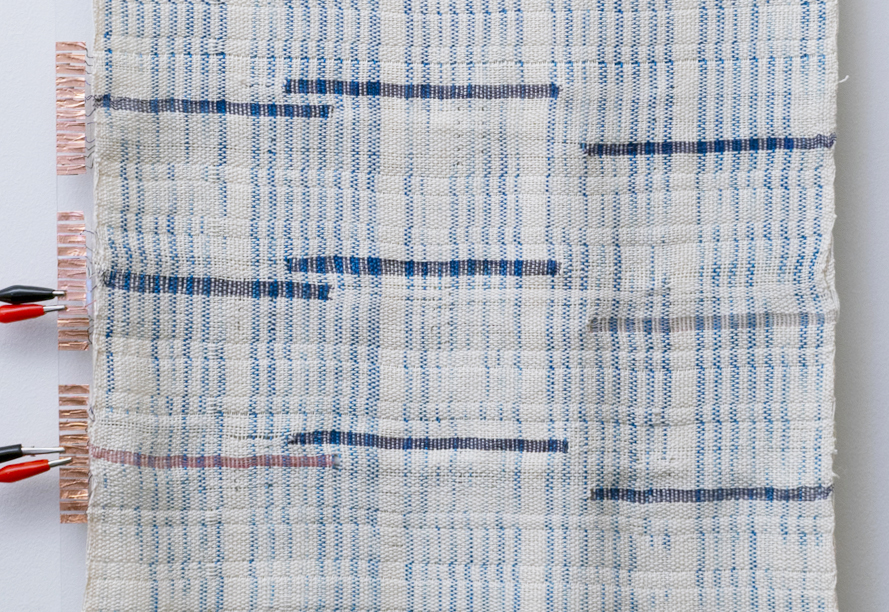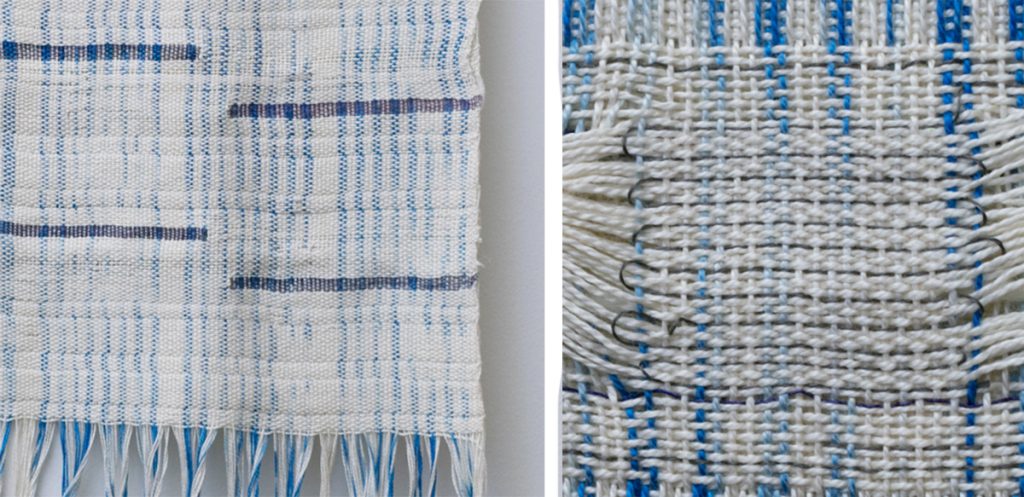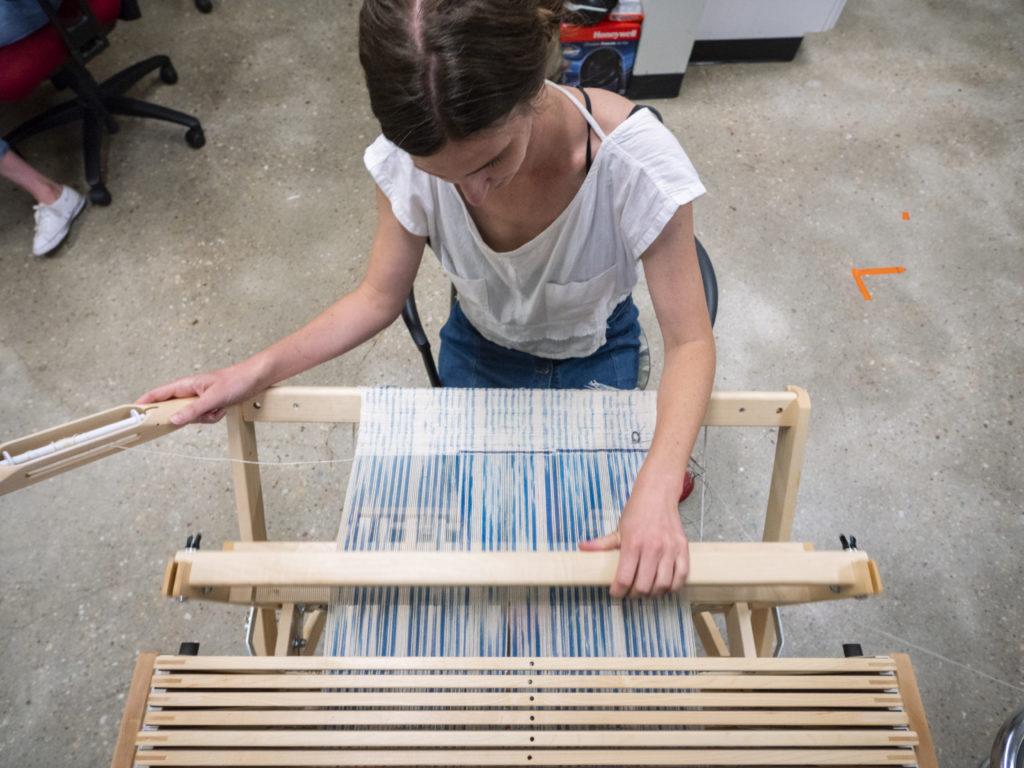This Summer, Laura was invited to give one of the keynotes in the HCI area at the Symposium for Computational Fabrication. The talk summarizes my ongoing interest in design imagination as it is cultivated through a practice of integrating theory and practice. It then focuses in on smart textiles as a place where this work can be explored in both poetic and productive capacities.
Tag: post-anthropocentric design

This is a first prototype of a vision of a force-fabric. When integrated into a garment, this textile could capture and replay how your body made contact with other bodies in the world. Those bodies may be human, created through the experiences of hugs or holding children, but they may also be of nonhuman forces – heavy winds or couches pressed upon ones back. The concept is to think of ways technology can make us aware of how we are physically supporting and supported by other objects and environmental forces. It sees garments as a interesting surfaces of intersection between self and other.

We created this first textile by double weaving sections of color changing yarn (resistive heating wire painted with a mixture of thermochromic pigments that change at different temperatures) on the front face and then integrating conductive pads on the back or under layer of the fabric. We used a tapestry technique to integrate a second piece of conductive yarn along a segment of the warp above the touchpad such that when it is pressed it completes the circuit. The double weaving structure makes the connective “guts” invisible from the front. Thus, the textile does not invite you to touch and poke it (how would you know where to touch), it simply captures a “picture” of the different press regions.

 Collaborative survival is a term coined by anthropologist Anna Tsing to describe how our (human) ability to persist as a species is deeply entangled with and dependent upon the health of a multitude of other species. We (Jen Liu, Daragh Byrne, and Laura Devendorf) wrote a paper that explores how this term inspires design. Specifically, Jen Liu reflects on collaborative survival within the context of designing tools for mushroom foraging. Photo Credit: Jen Liu. More Information: fieldcomputing.org
Collaborative survival is a term coined by anthropologist Anna Tsing to describe how our (human) ability to persist as a species is deeply entangled with and dependent upon the health of a multitude of other species. We (Jen Liu, Daragh Byrne, and Laura Devendorf) wrote a paper that explores how this term inspires design. Specifically, Jen Liu reflects on collaborative survival within the context of designing tools for mushroom foraging. Photo Credit: Jen Liu. More Information: fieldcomputing.org

Published at Designing Interactive Systems (DIS) 2017. This paper describes how the metaphor of the hybrid shapes how we imagine the future of technology. Drawing on feminist technoscience, We propose the alternative metaphor of coproductions to provoke visions for human-technology futures.